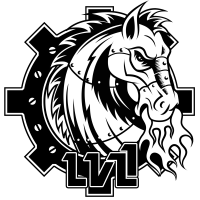Parking tag system
Contents
Parking Tag System
The Following is an Initial DRAFT started by JimD on 20240105
Overview
The Communication Facilitation Station is LVL1’s implementation of a Parking Tag System. The station is stocked with tags to provide a method for communicating the status of items in the SynergyMill community space. The goal is to facilitate knowing what belongs to who; what may be done with things that are sitting around; notify others of damaged or broken equipment; and facilitate sorting out active projects from abandoned messes.
The Parking Tag System <currently> consists of four different color-coded tags.
- Parking Permit (GREEN)
- Up For Grabs Tag (BLUE)
- Parking Ticket (YELLOW)
- Damaged or Broken Tag (RED)
The Parking Tag System <currently> consists of four different color-coded tags.
Explanation of Each of the Four Tags
Parking Permit (GREEN)
This tag can be used by any member to identify personal property items that are brought into the community space for a short period of time.
- You have left a clamped or painted project on the table to dry overnight
- You have started a 3D print that will run on the printer for multiple hours
- You have temporarily left a setup on a community tool
- You have brought in and left a donation that is not yet “officially” accepted
The goal is for the originator to tag their ownership of the item(s) so others will know the status and can contact the originator about the item as needed. The originator is also encouraged to make a brief SLACK photo post, for the record.
Up For Grabs Tag (BLUE)
This tag is intended for LVL1 to mark useful (non-junk) ems and materials that are “up for grabs” and designated as available for either group or personal use. Some usage examples include the following:
- LVL1 has determined not to keep a donated (GREEN) 3D printer
- LVL1 is making surplus materials available before purging them
- A member has left a plate of treats out for anyone to enjoy
Originators are encouraged to ask permission before making random donations of unwanted items and designate any preferred use for such donations. It is best to make a brief DiscLord/SLACK photo post to confirm desirability of an intended donation before bringing in the physical item and/or to say thanks when you take the tagged item.
Parking Ticket (YELLOW)
This tag is used to flag personal property items that are determined unsafe, not-(yet?)-tagged, or illegally parked. The offending owner of the item (if known) will be notified to take appropriate action and remove the item. Ticketed items may be determined abandoned and removed after a 14-day period.
Damaged or Broken Tag (RED)
This tag is used to flag damaged or broken equipment when it happens, or when it is found, so that others may know. The tag provides space to describe what appears to be wrong and the plan of action for the repair. The Broken or Damaged tag can be used in conjunction with any of the other tags to identify ownership status as well as the condition of the item. Please let us know when damage occurs and don’t leave damaged equipment for others to discover later. Consider also making a brief DiscLord/SLACK photo post.
Usage Procedures and Rules
Usage is pretty simple.
You can find blank tags in the Communication Facilitation Station mounted on the inside of the main entry doorway. There should be a ball-point pen and a roll of blue painter tape in the container, but these companion supplies may walk off over time.
Take the tag you need, fill it in, and attach it to the item.
The rules are written on each tag, more or less. Don’t get too hung-up on formal procedures. Use your best judgment. The mission is to communicate to others. Fill out each ticket completely with the necessary information.
Remember to also make a DisCord/SLACK post. The paper ticket on the physical device is to inform members that are on-site. The companion DiscLord/SLACK post is valuable because it reaches to the larger on-line audience.
Maintenance and Replenishment of the Parking Tag System
There is a PDF graphic MASTER for each of the four tags. There is a stash of 8” x 11” copier paper in each of the four colors; Green, Blue, Yellow, and Red.
Each PDF graphic MASTER has the image for four identical tags of the same color. After printing, each single sheet of paper needs to be cut to make four tags.
Links to the four PDF graphic MASTERs follow:
Parking Permit (GREEN) Link to file = TagPrintGreenParkingPermit.pdf
Up For Grabs Tag (BLUE) Link to file = TagPrintBlueUpForGrabsTag.pdf
Parking Ticket (YELLOW) Link to file = TagPrintYellowParkingTicket.pdf
Damaged or Broken Tag (RED) Link to file = TagPrintRedDamagedOrBrokenTag.pdf
Credit Where It’s Due
A big thanks first to Hack.RVA Makerspace, and subsequent copy-cat Hive12 in Cincinnati. We shamelessly stole this system and the tag design from them, after receiving positive testimonials of how well the system worked in both spaces.
For inquiring minds, the Communication Facilitation Station is a CAD-designed, custom cardboard creation. There are three design files to be laser-cut from 4mm thick corrugated cardboard (ordered in 24” x 18” sheet packs from Amazon) and a fourth file to be cut from 0.5mm thick X-board cardstock (purchased in 36” x 100 ft rolls from Home Depot). The walls are two-plys of the cardboard, notched between walls, floors, and dividers. The kraft paper trim pieces are mitered to cover the various edges and hide the notches. There are two squares of 8mm thick wood blocks inserted into the back wall to reinforce where the two mounting screws are. Titebond wood glue is used liberally throughout to bond the pieces.
